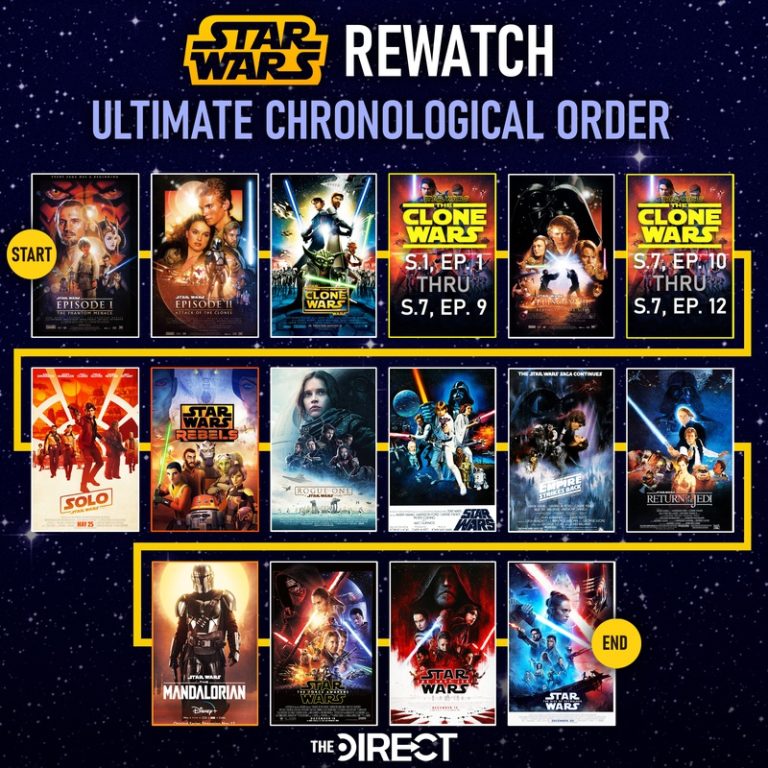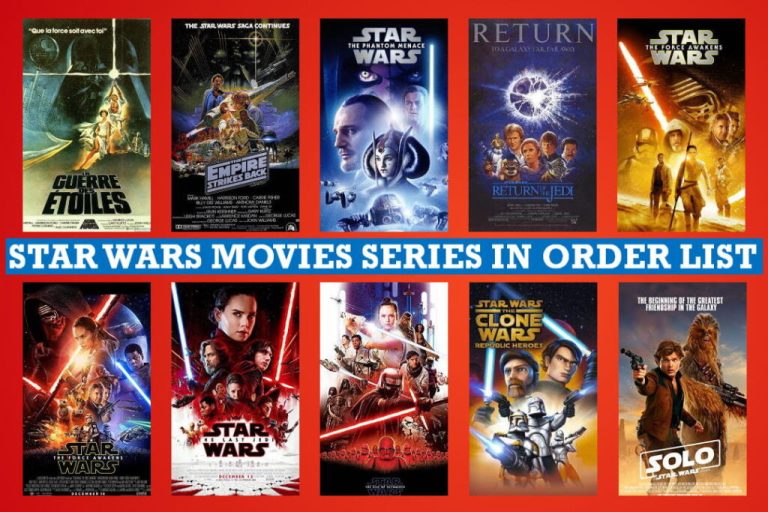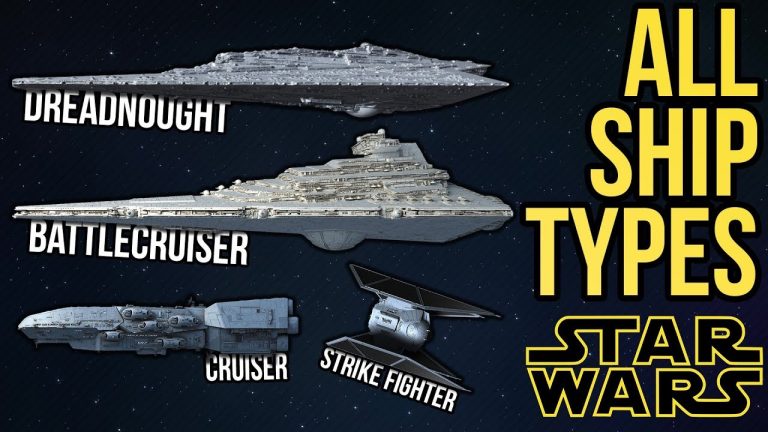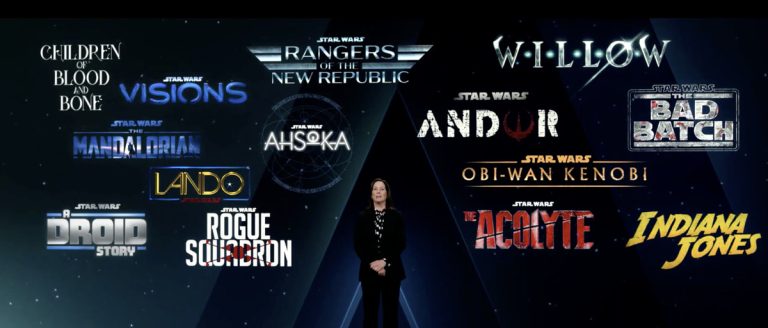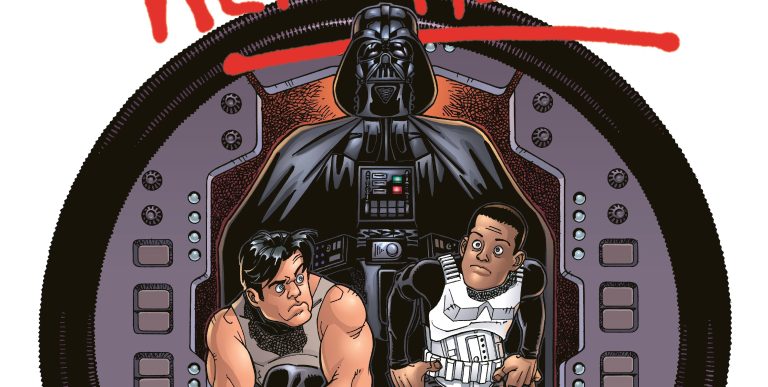What Order To Watch The Star Wars Movies?
Star Wars, the epic space opera that has captivated audiences for decades, has an expansive universe with numerous movies and spin-offs. If you’re wondering what order to watch the Star Wars movies in, fear not! I’m here to guide you through the galaxy and help you navigate the best viewing experience. Whether you’re a die-hard fan or a newcomer to the franchise, finding the right order can make all the difference in your Star Wars journey.
Now, when it comes to watching the Star Wars movies, there are a few different approaches you can take. Some fans prefer to watch the movies in release order, starting with the original trilogy, while others opt for a chronological viewing experience, beginning with the prequels. Both methods have their merits, and it ultimately depends on your personal preference. In this article, we’ll explore the different orders you can choose from and discuss the pros and cons of each. So grab your lightsaber, hop in your starship, and let’s dive into the galaxy far, far away!
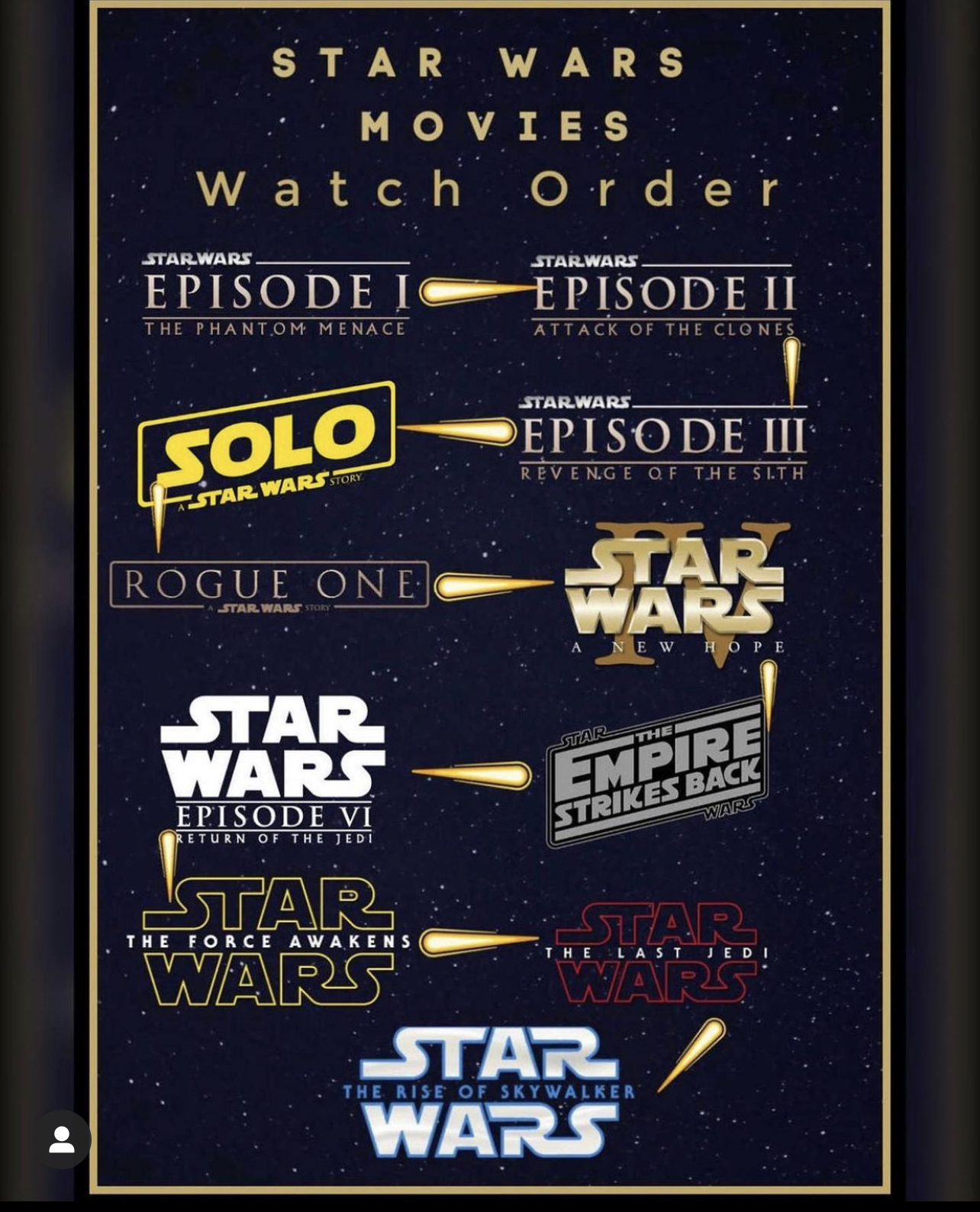
What Order to Watch the Star Wars Movies?
Star Wars is one of the most beloved and iconic film franchises in history. With numerous movies, spin-offs, and TV shows, it can be overwhelming for newcomers to figure out the best order to watch the Star Wars movies. Whether you’re a die-hard fan or a curious beginner, this article will guide you through the various viewing orders and help you decide how to embark on your Star Wars journey.
1. Release Order: The Classic Approach
The most common and traditional way to watch the Star Wars movies is in release order. This means starting with the original trilogy, followed by the prequel trilogy, and concluding with the sequel trilogy. The release order allows you to experience the story as it unfolded for audiences over the years, giving you a sense of the franchise’s evolution and the cultural impact it had.
Begin your Star Wars adventure with “Star Wars: Episode IV – A New Hope” (1977), followed by “Episode V – The Empire Strikes Back” (1980) and “Episode VI – Return of the Jedi” (1983). These three films introduce you to iconic characters like Luke Skywalker, Princess Leia, and Darth Vader, and set the stage for the epic battle between the Rebel Alliance and the Galactic Empire.
The Prequel Trilogy
After experiencing the original trilogy, dive into the prequel trilogy, starting with “Episode I – The Phantom Menace” (1999), followed by “Episode II – Attack of the Clones” (2002) and “Episode III – Revenge of the Sith” (2005). These films take you back in time to explore the origins of characters like Anakin Skywalker (who later becomes Darth Vader), Obi-Wan Kenobi, and the rise of the Sith.
By watching the prequels after the original trilogy, you gain a deeper understanding of the events that led to the Galactic Empire’s rise and the downfall of the Jedi Order. It also enhances your appreciation for the original trilogy’s characters and their motivations.
The Sequel Trilogy
Finally, wrap up your Star Wars marathon with the sequel trilogy, which begins with “Episode VII – The Force Awakens” (2015), followed by “Episode VIII – The Last Jedi” (2017) and “Episode IX – The Rise of Skywalker” (2019). These films introduce new heroes and villains while continuing the saga of the original characters you’ve grown to love. Witness the conflict between the Resistance and the First Order as the legacy of the Jedi and Sith is further explored.
Watching the Star Wars movies in release order allows you to experience the franchise’s chronological progression and witness the story unfold as it was originally presented to audiences. It’s a tried-and-true approach that has been enjoyed by fans for decades.
2. Chronological Order: The Full Story Approach
If you prefer a more linear approach to storytelling, watching the Star Wars movies in chronological order is another option. This means starting with the prequel trilogy, followed by the original trilogy, and concluding with the sequel trilogy. By doing so, you experience the events of the Star Wars universe in chronological order.
Begin your journey with “Episode I – The Phantom Menace” and continue with “Episode II – Attack of the Clones” and “Episode III – Revenge of the Sith.” These films delve into the rise of Anakin Skywalker and the fall of the Jedi Order, providing crucial backstory for the events that unfold in the original trilogy.
The Original Trilogy
After completing the prequel trilogy, move on to the original trilogy, starting with “Episode IV – A New Hope,” followed by “Episode V – The Empire Strikes Back” and “Episode VI – Return of the Jedi.” This allows you to witness the culmination of the story, as the Rebel Alliance battles the Empire and Luke Skywalker confronts his destiny as a Jedi.
The Sequel Trilogy
Finally, finish your Star Wars marathon with the sequel trilogy, beginning with “Episode VII – The Force Awakens,” followed by “Episode VIII – The Last Jedi” and “Episode IX – The Rise of Skywalker.” This brings the story full circle, introducing new characters while tying up loose ends from the previous trilogies.
Watching the Star Wars movies in chronological order provides a comprehensive understanding of the story’s timeline and allows you to see how the events in each trilogy connect to one another. It’s a unique way to experience the Star Wars saga, especially if you’re interested in following the narrative from start to finish.
3. Machete Order: A Twist on the Classic
The Machete Order is a fan-created viewing order that offers a different perspective on the Star Wars saga. It involves watching the films in a specific order that aims to preserve certain plot twists while enhancing the overall viewing experience.
The Machete Order begins with the original trilogy, starting with “Episode IV – A New Hope” and “Episode V – The Empire Strikes Back.” These two films establish the core characters and plotlines of the saga. However, it deviates from the traditional order by skipping “Episode I – The Phantom Menace” entirely.
The Original Trilogy (Continued)
After watching the first two films of the original trilogy, you then move on to “Episode II – Attack of the Clones” and “Episode III – Revenge of the Sith.” This serves as a flashback that delves into the origins of Darth Vader and the fall of Anakin Skywalker.
Once you’ve explored the prequel trilogy, return to the original trilogy to conclude the story with “Episode VI – Return of the Jedi.” The Machete Order omits “Episode I” to maintain the surprise of Darth Vader’s true identity, which is revealed in “The Empire Strikes Back.”
The Machete Order offers a fresh take on the Star Wars saga, providing a unique viewing experience while preserving key plot twists. It’s an alternative approach for those who want to shake things up and see the story unfold in a different way.
4. Standalone Films and Spin-Offs
In addition to the main saga, the Star Wars universe also includes standalone films and spin-offs that expand the lore and provide additional context. These films can be enjoyed on their own or integrated into your viewing experience.
Some notable standalone films include “Rogue One: A Star Wars Story” (2016), which takes place just before the events of the original trilogy, and “Solo: A Star Wars Story” (2018), which explores the early adventures of Han Solo.
There are also animated TV shows like “Star Wars: The Clone Wars” and “Star Wars Rebels,” which further expand the Star Wars universe and provide additional character development and storylines.
While not necessary to understand the main saga, these standalone films and spin-offs offer a deeper dive into the Star Wars universe and can be enjoyed at any point during your Star Wars marathon.
Conclusion
Deciding on the order in which to watch the Star Wars movies is a matter of personal preference. Whether you choose the classic release order, the chronological order, the Machete Order, or a combination of all the films, each viewing experience offers a unique perspective on the epic space opera. Ultimately, the most important thing is to immerse yourself in the galaxy far, far away and enjoy the thrilling adventures, iconic characters, and timeless storytelling that have captivated audiences for generations.
Key Takeaways – What Order to Watch the Star Wars Movies?
- There are two main viewing orders for the Star Wars movies: release order and chronological order.
- Release order is the order in which the movies were originally released, starting with Episode IV: A New Hope.
- Chronological order is the order in which the events of the Star Wars universe occur, starting with Episode I: The Phantom Menace.
- For a 13-year-old kid, it’s recommended to start with release order to experience the original trilogy first.
- However, watching in chronological order can provide a different perspective and a deeper understanding of the story.
Frequently Asked Questions:
Star Wars is a beloved franchise with a complex timeline. If you’re wondering what order to watch the Star Wars movies in, we’ve got you covered. Below are the answers to some commonly asked questions about the viewing order:
1. Should I watch the Star Wars movies in release order?
Watching the Star Wars movies in release order is a popular choice for many fans. This means starting with “Star Wars: Episode IV – A New Hope” (1977) and following the original trilogy before moving on to the prequel trilogy and the newer films. This order allows you to experience the story as it was originally presented to audiences and see how the franchise evolved over time.
However, keep in mind that watching in release order means jumping back and forth in the timeline, which can be a bit confusing for newcomers. If you prefer a more linear storytelling approach, there are other viewing orders you can consider.
2. What is the chronological order of the Star Wars movies?
If you want to watch the Star Wars movies in chronological order, you should start with “Star Wars: Episode I – The Phantom Menace” (1999) and continue through the prequel trilogy before moving on to the original trilogy and the newer films. This order allows you to follow the story in a linear fashion and see how events unfold in chronological order.
Keep in mind that watching in chronological order means starting with the prequel trilogy, which some fans argue gives away certain surprises and plot twists from the original trilogy. However, this order can provide a unique perspective on the story and characters.
3. What is the Machete Order for watching the Star Wars movies?
The Machete Order is a viewing order that was popularized by fans as an alternative to both release order and chronological order. In this order, you start with “Star Wars: Episode IV – A New Hope” (1977) and “Star Wars: Episode V – The Empire Strikes Back” (1980), then jump back to the prequel trilogy (“Episode I”, “Episode II”, and “Episode III”), and finally conclude with “Star Wars: Episode VI – Return of the Jedi” (1983).
The Machete Order aims to enhance the storytelling by preserving certain surprises and plot twists while also providing background information through the prequel trilogy. This order is not officially endorsed by Lucasfilm, but it offers a unique way to experience the Star Wars saga.
4. Should I include the standalone Star Wars films in my viewing order?
The standalone Star Wars films, such as “Rogue One: A Star Wars Story” (2016) and “Solo: A Star Wars Story” (2018), can be enjoyed as standalone stories or incorporated into your viewing order. These films expand the Star Wars universe and provide additional context to certain events and characters.
If you want to include the standalone films in your viewing order, you can watch them either before or after the main saga films. Some fans prefer watching them in release order, while others insert them chronologically based on the events depicted in the films. Ultimately, it’s up to you to decide how you want to incorporate the standalone films into your Star Wars marathon.
5. Can I skip any of the Star Wars movies?
While every Star Wars movie contributes to the overall story and mythology, it is possible to skip certain films if you’re looking for a more condensed viewing experience. However, keep in mind that by skipping films, you may miss out on important character development and plot points.
If you’re short on time or want to focus on specific storylines, you could consider skipping the standalone films or certain episodes from the prequel or sequel trilogies. However, for the most comprehensive understanding of the Star Wars universe, it’s recommended to watch all the movies.
The BEST Order To Watch STAR WARS | Mashable Explains
Final Summary: The Best Order to Watch the Star Wars Movies
So there you have it, the ultimate guide to watching the Star Wars movies in the best order possible. Whether you’re a die-hard fan or a newcomer to the galaxy far, far away, this conclusion will help you navigate the complex timeline and fully immerse yourself in the epic saga.
When it comes to watching the Star Wars movies, one thing is clear: there are many different orders to choose from. While some prefer to watch the films in release order, others argue for a chronological approach. However, after careful consideration and taking into account the narrative arcs and thematic elements, it’s our recommendation to watch them in what we call the “Machete Order.”
The Machete Order involves starting with Episode IV: A New Hope, followed by Episode V: The Empire Strikes Back. Then, after witnessing the iconic “I am your father” reveal, you’ll go back in time to Episode II: Attack of the Clones and Episode III: Revenge of the Sith to explore the tragic backstory of Anakin Skywalker. Finally, you’ll finish off with Episode VI: Return of the Jedi to experience the thrilling conclusion of the original trilogy. This order allows you to maintain the surprises and plot twists while still delving into the rich lore of the Star Wars universe.
Remember, the order in which you watch the Star Wars movies is ultimately up to you. Whether you choose to follow the Machete Order or opt for another sequence, what matters most is the enjoyment and connection you feel with this beloved franchise. May the Force be with you as you embark on your Star Wars movie marathon!

